Small business is called “small” for a reason. As its owner, most likely you don’t have a big budget to sponsor local events all year round. The same goes for printing out loads of handouts and paying for weekly ads in media. Stuff like that usually costs a pretty penny, but its efficiency is quite questionable in the digital age. Today, the primary source of information is Google, so the main promo channel is SEO for small business owners.
With a limited budget, paid search is out of the question. I personally click through ads there in rare cases, as it all feels like some sort of manipulation. Instead, let’s better focus on organic search as your playing field. While Google charges no fees for ranking your biz in the Top 10, it still requires a smart game from you.
No matter how responsibly you take your job, your diligence can hardly influence your organic rankings. Google doesn’t have a button allowing users to check your product quality online. There’s only a field where they can type in their queries, that’s all. So, the right wording is the first thing that can pave your way to the first page of Google through content marketing.
Learn how to pick juicy business keywords in this data-driven guide.
Start with question-based keywords
Get ready for the bitter truth. No one is willing to pay you for your services, especially at the moment when they face some problem. With loads of info available online, people try to solve their issues on their own first. At this stage, their search queries are more informational, i.e. include question words like “how,” “where,” “what,” etc.
Let’s say you run a small design studio. When some startup needs a logo, they just google ways to create it themselves. Their budget is as tight as yours, and there are so many free tools available. For a term “logo,” there are over 101K question-based queries, each of which can get up to 20K searches per month. So, the audience you can target at this stage is broad for sure.
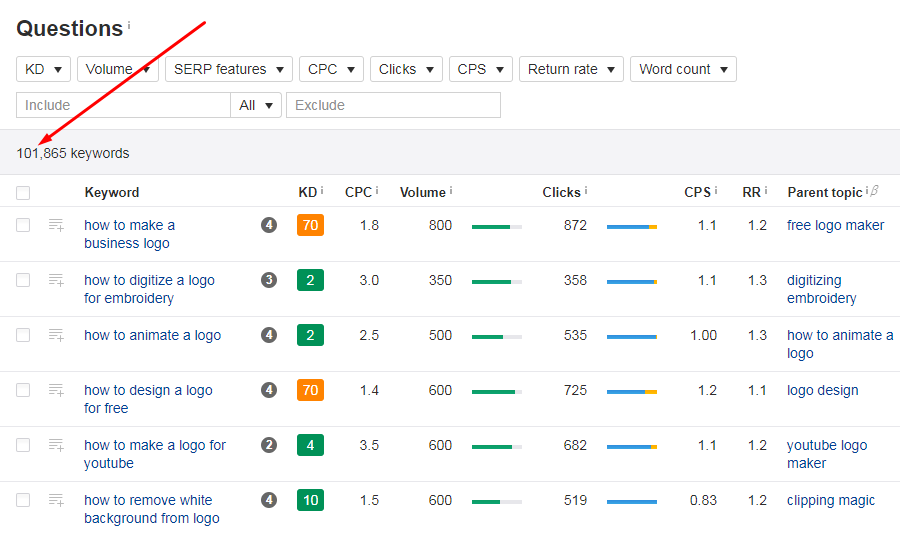
As shown on the chart below, the most common types of informational queries include questions “how” (58.6%) and “what” (22.7%). The data proves that a lot of your potential clients want to learn how to work things out themselves.
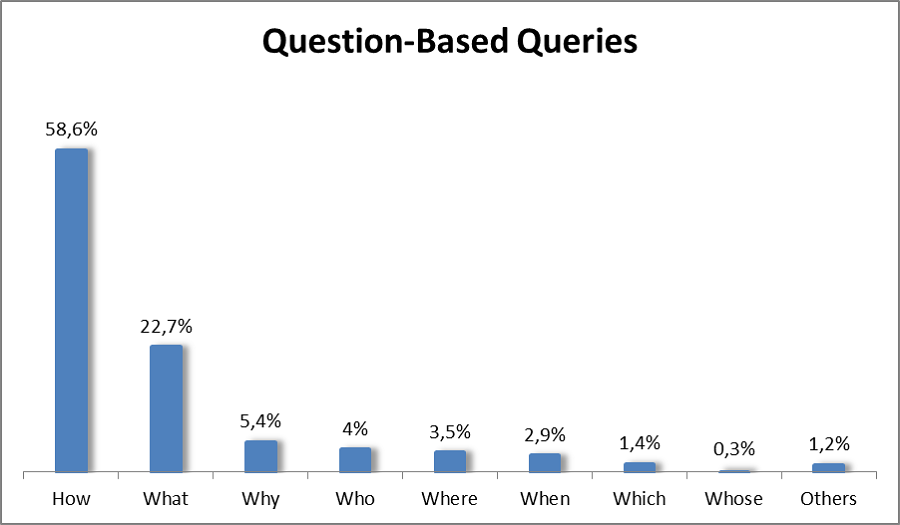
To approach them, publish a complex logo design guide and let them understand the job requires skills and takes time. Also, remind them that a logo is the face of their brand, so it’s not something to keep on the “do-it-yourself” list. You can also show off examples of your works for people to fall in love with them and be ready to give you a try.
There are different content strategies to experiment with at this stage. Check out which of them are trending this year.
Note that Google can give you clues about real users’ queries. There are two strategic places to check them – its search field with a built-in autocomplete option and box with related searches at the bottom. That way, you’ll be able to diversify your keyword list.
Choose keywords based on their metrics
You might have heard like a thousand times to check the search volume of your target keyword. While it’s absolutely necessary, this metric doesn’t shed light on a bunch of important issues:
- how much traffic you can drive for the chosen keyword;
- if that traffic will come throughout the year;
- if you’ll be able to push through to the Top 10 at all.
The bottom line is to evaluate a few other metrics if you want keyword research to pay off.
Clicks
Being searched in Google is not your ultimate goal. People can scroll through SERP and pass your page by. You need to get an idea of how many clicks your target keyword can bring you.
Some queries get many searches, but most people never click through organic results. There are over 10K of such keywords for the term “logo.” These are mostly branded terms like “Facebook logo” and generic phrases like “cafeteria logo.” The latter generates no clicks in 83% of cases.
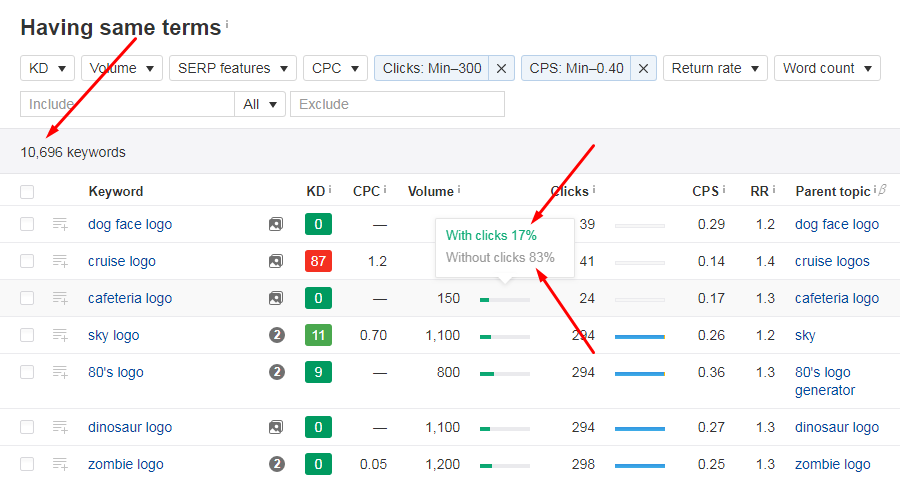
That’s because most searchers want to see logo designs rather than read about them. And Google shows an image pack right above organic results. There’s no point in scrolling down.
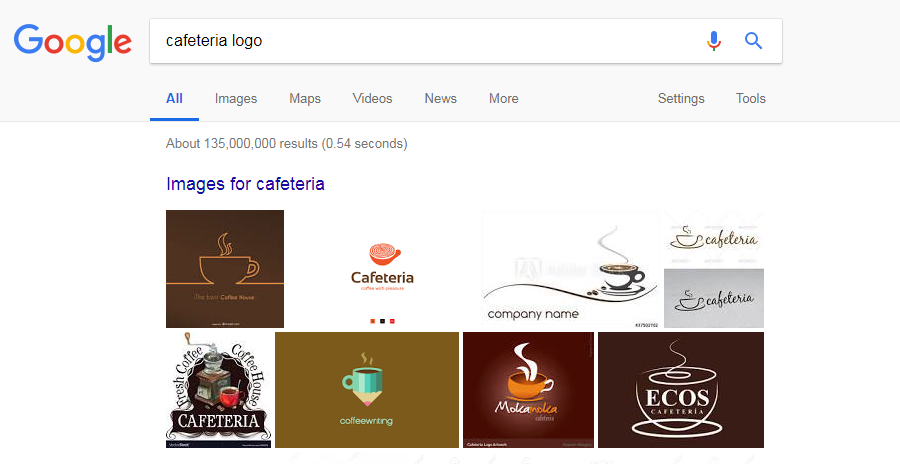
So, checking how SERP looks for your target keyword must be your focal point.
Seasonality
Not all business keywords get searches and therefore clicks (!) all year round. For example, some logos are in demand only during a specific period. For example, the interest in “Halloween logos” starts two months before the holiday, reaching its peak at the end of October. Then, it drops to stay record low for the remaining ten months.
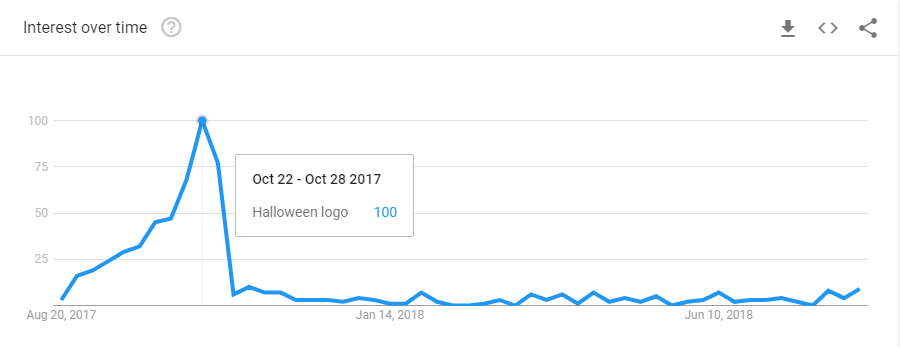
Always check Google Trends to understand for how long your business keywords will pay off with traffic. As this tool is free, it’s perfect for SEO for small business owners.
Difficulty
For some keywords, it’s quite easy to rank in the top (over 52K keywords involving the term “logo”). For others, it’s almost impossible. That’s why you should estimate your chances before making a final choice.
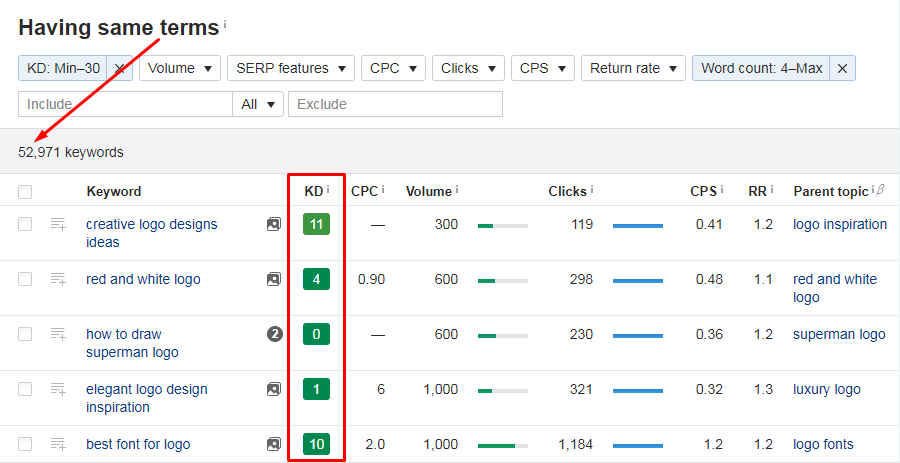
Different tools use their different algorithms to calculate the difficulty score. One of them is based on the number of backlinks required, which makes sense. Google checks backlinks to figure out if the page is good enough for high rankings. If people link to that piece of content, it must provide value. That’s how Google’s brain works.
For convenience, you can check right in SERP how many backlinks top-ranking pages have for your keyword. It’ll give you a clear idea of how much you’ll need to invest in link building.
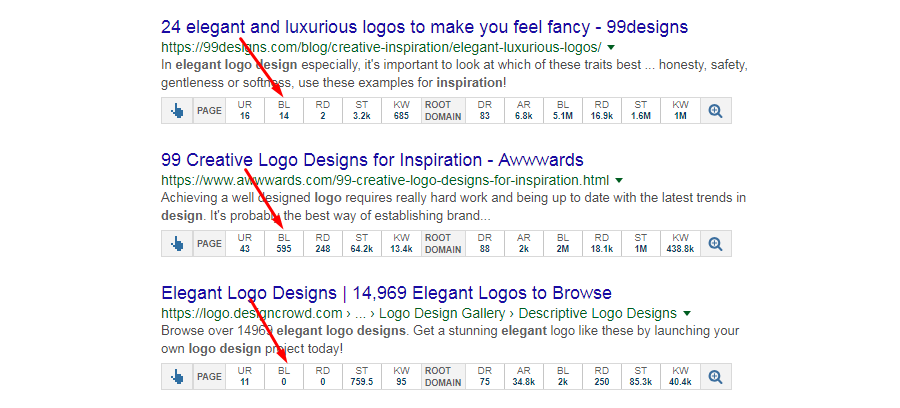
Make sure your business keywords are specific enough
Now let’s find out how to target ready-to-pay searchers. First off, SEO for small business owners differs from SEO for big companies. Naturally, the latter have more resources to build a powerful online empire that Google will respect and rank them in the top. You won’t kick them out of there with such broad terms as “design services.”
Here’s the irony – size does matter in this case. While your biz is small, keywords you use should be long and specific. Let’s take a broad phrase “design services.” There are over 11K queries that are more specific due to modifiers like the product (28,3%), niche (22,4%), location (13,4%), etc. Note that some queries contain a few modifiers, which makes them even more specific.
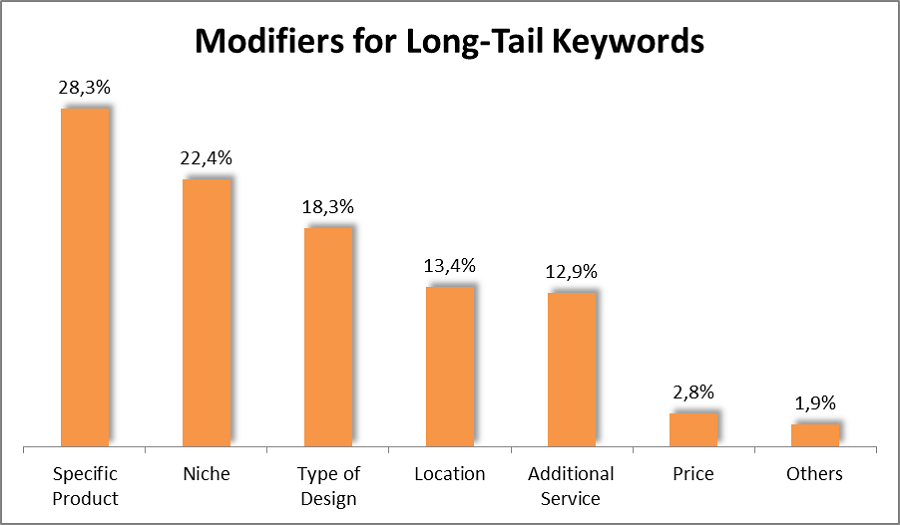
To get a better idea of keywords for each modifier, check out a few examples below.
- Specific Product: company logo design services, ecommerce website design services, mobile app design services;
- Niche: web design services for small business, cleaning services logo design, website design for financial services;
- Type of Design: graphic design services online, custom web design services, 3D cad design services;
- Location: Atlanta web design services, Salt Lake City web design services, web design services Los Angeles;
- Additional Service: web design and hosting services, web design and SEO services, graphic design and printing services;
- Price: free logo design services, affordable web design services, cheap graphic design services.
These long-tail keywords don’t have as high search volumes as broad terms, but they are more powerful than they seem to be. The longer your target keyword is, the more queries your content can rank for. For example, the page ranking #1 for “best logo design services” also ranks for over 700 similar queries in the US and 1K globally.
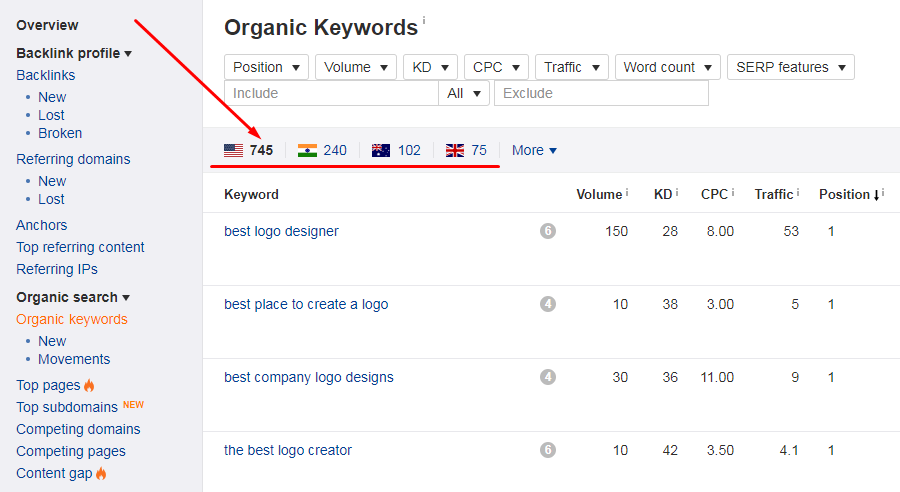
That’s because Google is much smarter in the age of RankBrain than it was in the days of George Bush’s presidency. The engine understands how rich the language is in similar terms and different grammatical constructions that searchers use to find the same info. Instead of processing queries letter for letter, Google’s algorithm analyzes the intent behind each query.
Check out a few things that it skips today.
Word Form
The word form is not a big deal for Google, be it plural or singular, gerund or infinitive, etc. If you are looking for a design company, the engine can suggest designers to you. What matters is the word root, which, in its turn, can take different endings and suffixes.
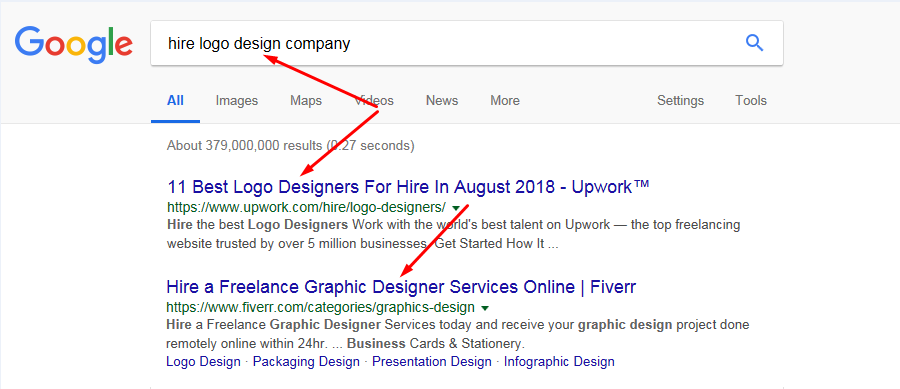
Word Order
Regardless of the word order in your query, Google will get your point. As you can see below, “eCommerce” is at the end of the original query and at the beginning in the top results. The same goes for minor stuff like prepositions, conjunctions, articles, etc. There’s no preposition “for” in search results.
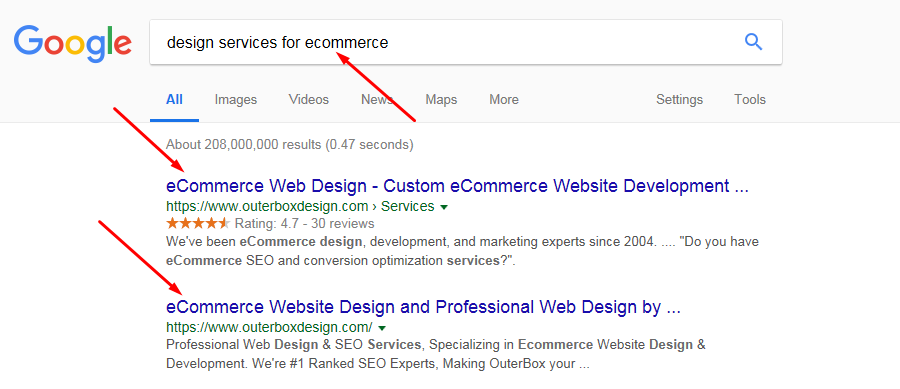
Close Terms (or Synonyms)
Google understands that synonyms have a very close meaning, so it doesn’t differentiate between them. For the attribute “cheap,” the engine returns results with “affordable.”
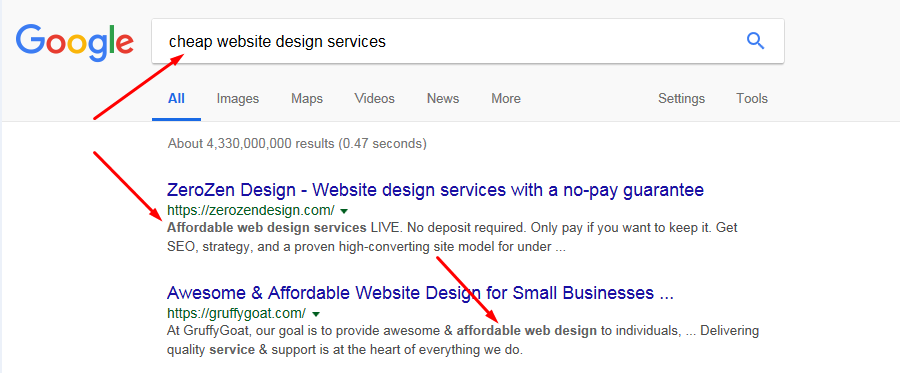
Use keywords that bring traffic to other businesses
There may be a lot of roadblocks getting in your way from big companies. But the good thing is they are part of SEO for small business owners. This is probably the only area where you can benefit from competitors. Use competitive intelligence tools to check their profitable keywords and sort them by the metrics mentioned above. That way, you’ll identify easy pickings in your niche. If someone gets traffic for them, you can do it too.
Curious to find out who’s ahead of the game in the competitive landscape? Play with a free tool Battle of the Brands. You’ll be able to compare your and competitor’s mentions regarding the total amount, positive/negative feedback, and the authority of resources mentions come from.
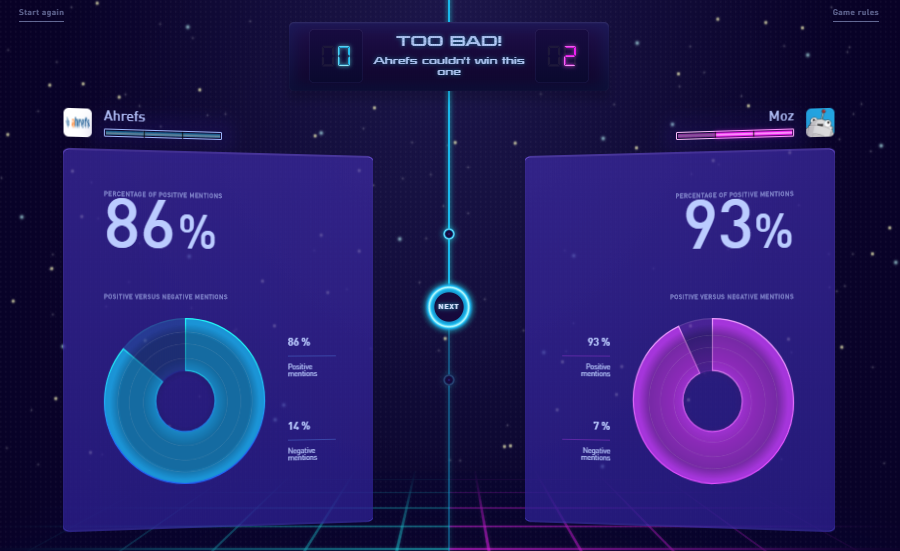
Conclusion
SEO for small business owners will be rewarding only if you play the game right. You must keep in mind a bunch of factors to pick profitable business keywords. While it may take some time and brainwork, it won’t hurt your budget. Unless you’re going to hire someone who’ll do the job for you, of course. Do you know any other keyword strategies that worked out well for your biz? Let us learn about them in the comments below.
About the Author
Nick Campbell is a content marketer and outreach manager at Ahrefs. He is passionate about technology, SEO, and blogging trends. When Nick is not researching a new topic, he’s probably at some tech event.
Thinking about contracting with a web application developer? Make sure you read this first.

